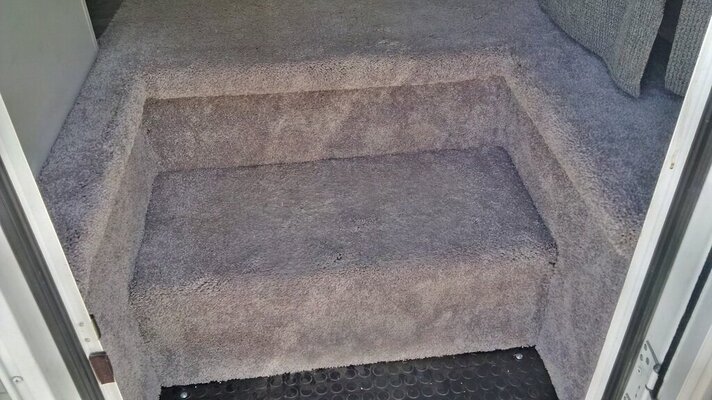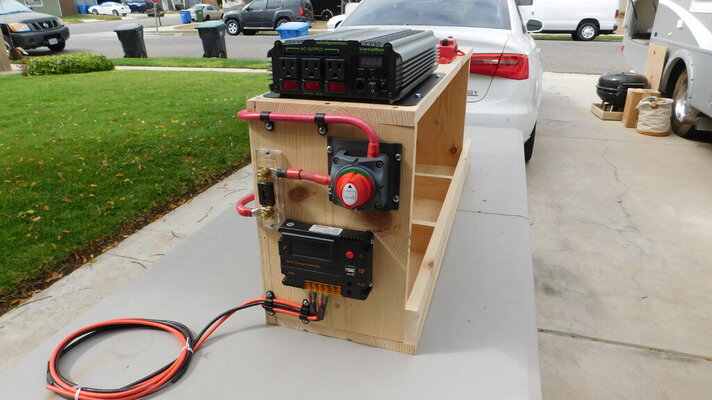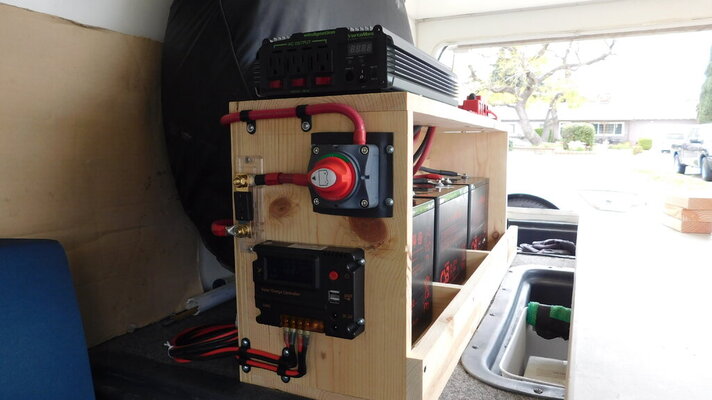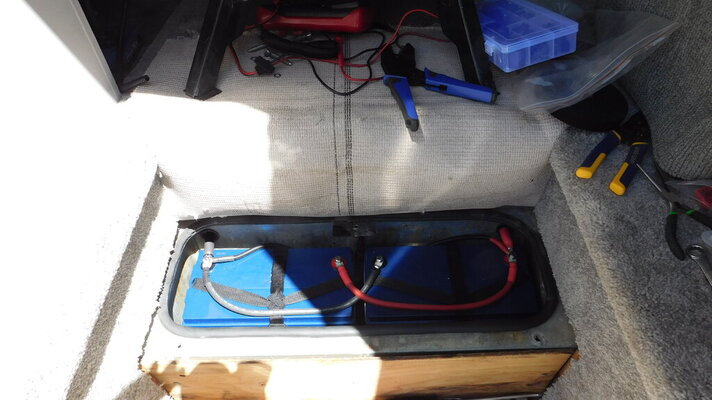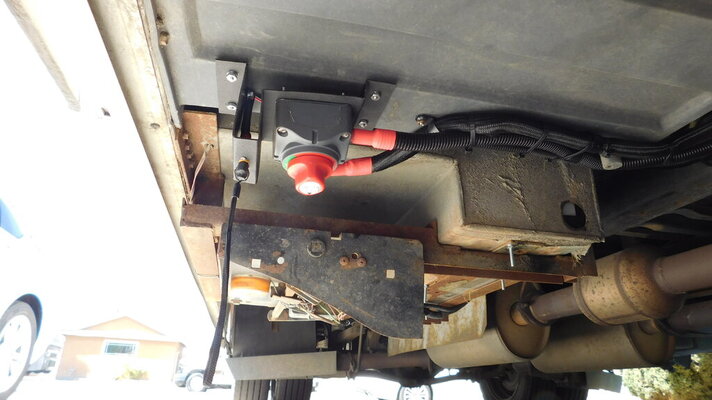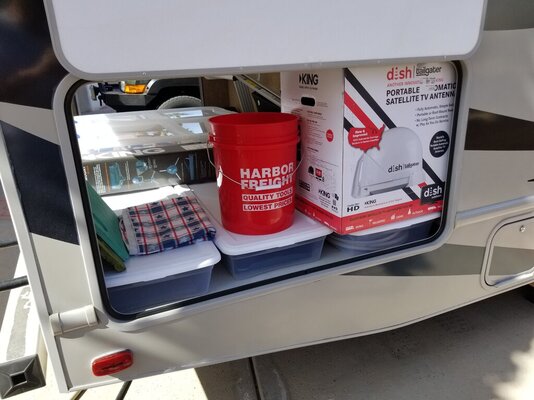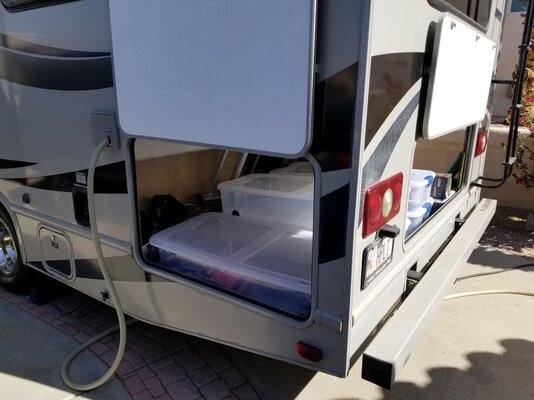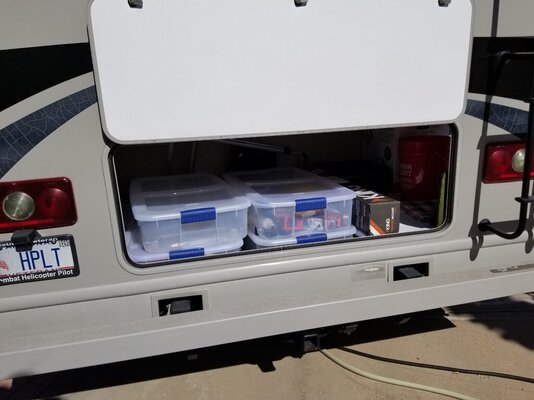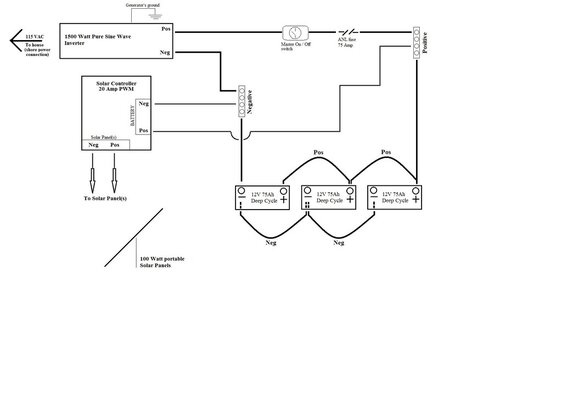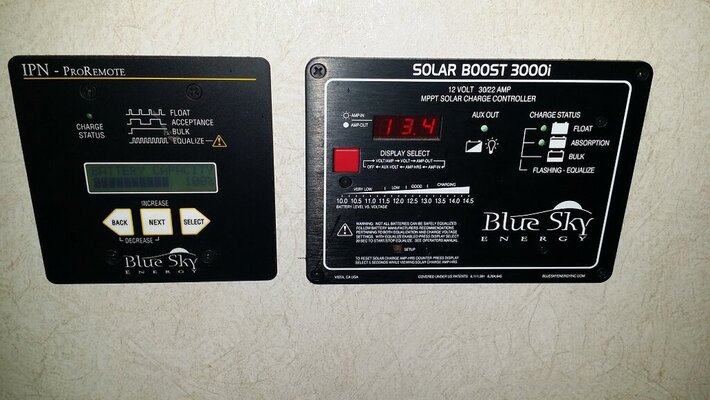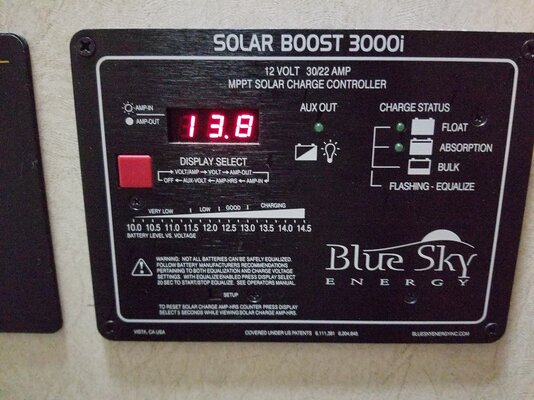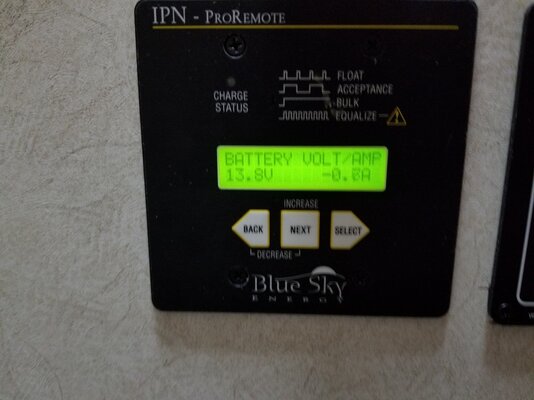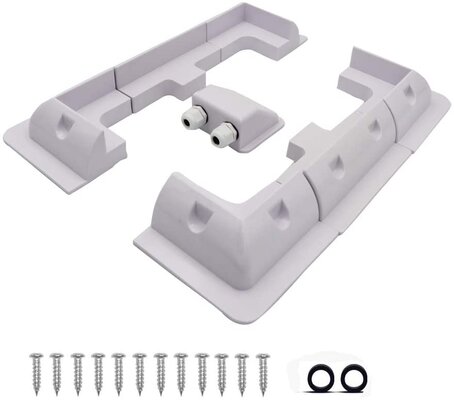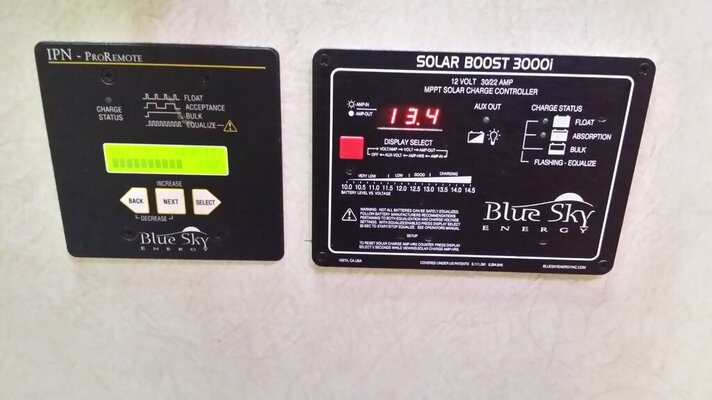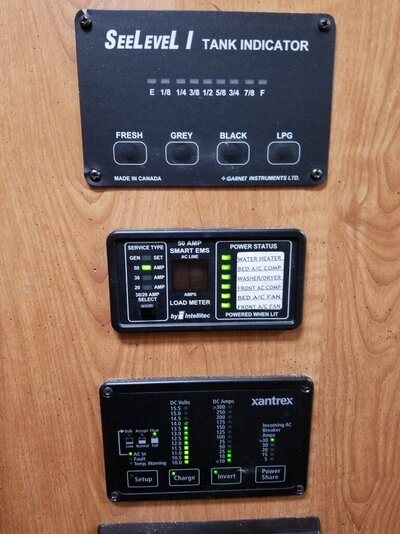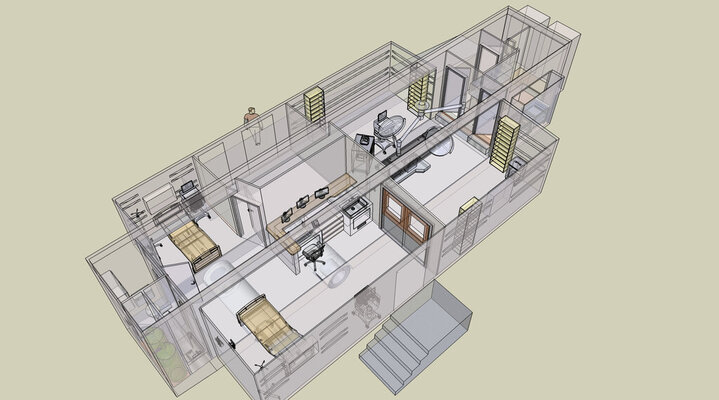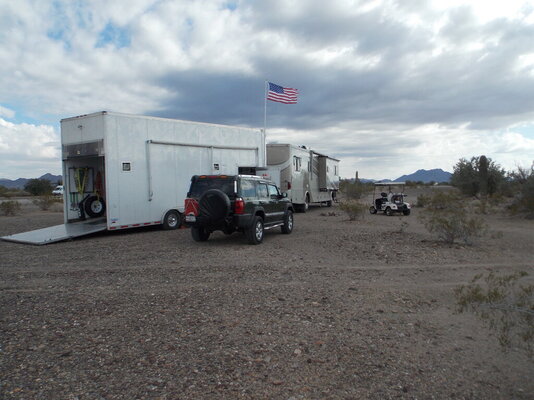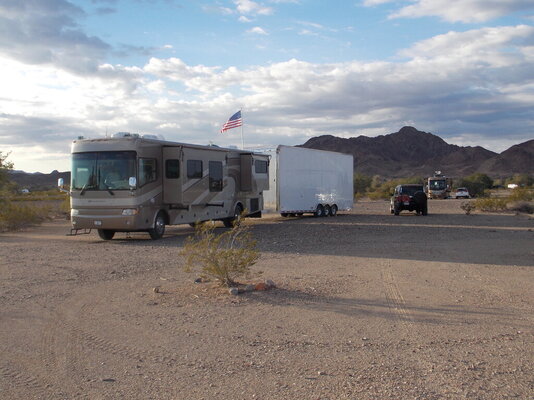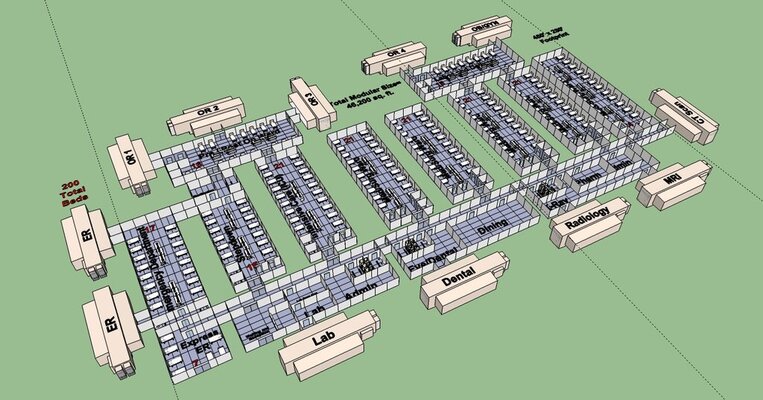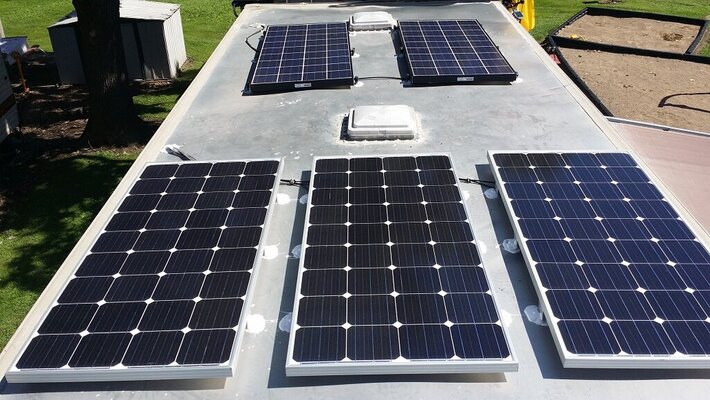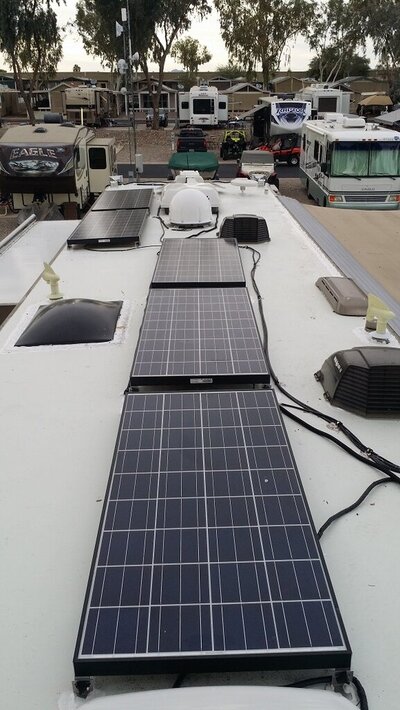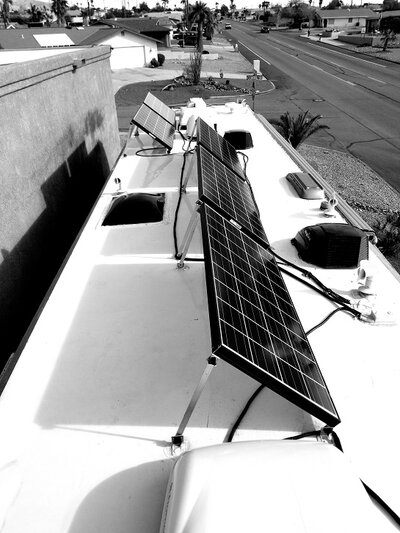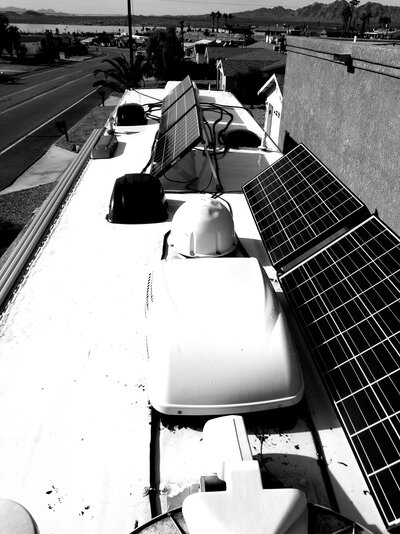I could not sleep so I thought I would share with you the initial elements of the modified design after seeing your solution using the rear storage area.
I am a project type guy and often over design some of my modifications. They are not always completely practical or cost effective but I do enjoy doing them.
I had already selected most of the equipment for my planned installation.
The major difference and change to my plan after seeing your setup involves having a solution for where to route the cables down from the roof and where to locate the battery bank and inverter.
I am also going to feed the A/C output into selected branches in the circuit breaker panel which is located in the rear bedroom area right near the Inverter. I will skip the high amp branches like the Air conditioner circuit. This is how the Inverter in my previous Country Coach was connected to most all of the circuits using a Xantrax 458 charger/Invertor.
I will install four 190 watt panels on the roof using a mounting system that I found on Amazon. It is called CMYYANGLIN mounting brackets. They are expandable to fit the size of most panels and raise the panel off the roof and have an aerodynamic effect. The 10 gauge cable will pass down thru a corner closet to the storage area.
In the side wall of the closet I will flush mount the charge controllers, Remote IPN network monitor, and the remote inverter panel. This is the same setup that I installed in my last coach.
The Blue Sky system uses a master charge controller, (3000I) to network more than one charge controller, (SB3024L), (up to seven), so it works like multiple water hoses feeding into a water tank. One of the benefits is that dual controllers help eliminate shadows effecting a large single array. The blue Sky IPN monitor acts like a Trimetric monitor to show many details about the batteries.
I install inline fuses before and after the charge controllers so that I can easily disconnect the power.
This will feed into your really practical battery bank and Invertor solution.
As I mentioned I will feed the A/C output directly to the circuit breaker panel and feed the AC if available from a generator or shore power to the Xantrex Invertor/Charger that will also charge the battery bank. The Zantrex XC series has a lithium charging profile. The remote control panel for the Inverter also flush mounts in the wall of the closet in the bedroom. The DC current goes into and out of the Invertor thru a catastrophic fuse,
Here are picture of the networked charge controllers and panel mount.
